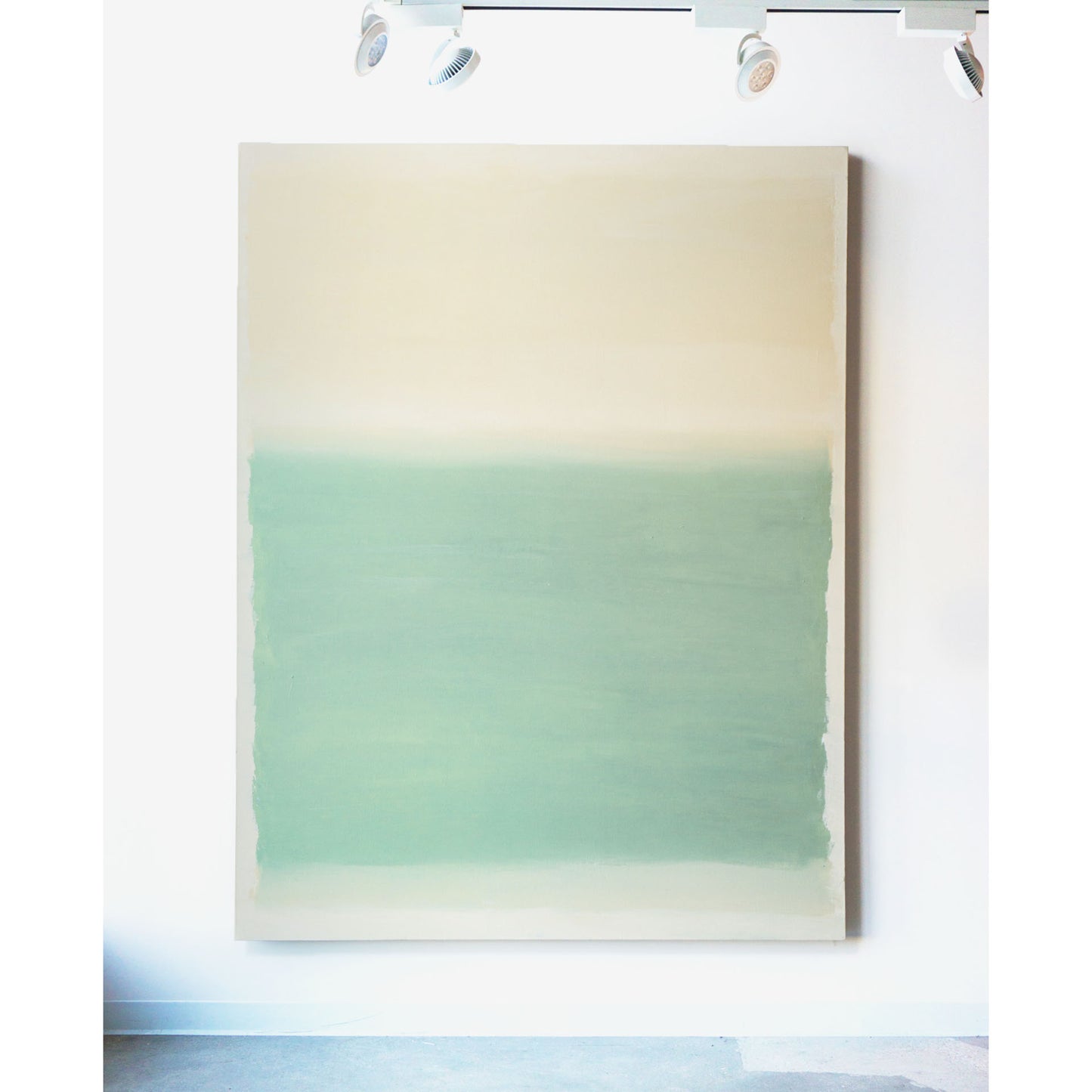Hayton Oei
Dove with Olive Branch Flying over Limestone Fields
Dove with Olive Branch Flying over Limestone Fields
Couldn't load pickup availability
Hayton Oei
Dove with Olive Branch Flying over Limestone Fields
2021
Oil and Galkyd on linen
93 x 71.5
$9,700
This work emerges from the influence of Rothko’s color field paintings. The colors selected here represent different shades of olive green and beige limestone, two textures that are frequently employed in contemporary interior design in Los Angeles. This image is not composed of just two colors, but there are rectangular underpainted shapes and blurred regions that create a spectrum of shades. Olive green and beige limestone also make up the artist’s own favorite palette as limestone is the medium often used in French chateaus and important New York residential buildings by famed architect Robert A.M. Stern, while the olive tree has biblical and historical significance. These popular interior hues are also chosen for their warm, neutral, and organic qualities that make for a soothing effect in a home.
The combination together reflects the Los Angeles aesthetic and transports the viewer to an emotional state of calm. Oftentimes, film, and rarely, novels, have the ability to move the viewer powerfully by affect, but art does not---this painting seeks to challenge that by moving the viewer so powerfully that they are left more tranquil, or even close to tears; the colors evoke. The title imposes a narratology and biblical importance to this iconography, drawing attention to the fact that Los Angeles’ beloved aesthetic has origins in the creation story; imagining Noah’s dove as flying over limestone fields is the artist’s own act of myth making, and alters the more commonly described “lavender fields.”
About the collection:
Retracing Los Angeles Through the Looking Glass: A Monumental Homage is a deeply personal collection that was never meant to be exhibited or sold. It was created for the artist’s own apartment. However, due to happenstance, it is shared with the public for the first time now. It is also the artist’s debut exhibition.
Powered by the artist’s visual memory and studies of art history, the collection originates from the lineage of Rothko, Pollock, de Kooning, Motherwell, Richter, Alex Israel and Mary Weatherford. The aim is to reference the past as a springboard for the future, and to transcend the often imaginative ceiling of artists where artists only create one successful iconography in their lifetime and are bound by that “signature” aesthetic presentation. Here, the artist free-flowingly appropriates, alters, combines, and supplements different existing iconographies in the canon of Abstract Expressionism and the contemporary LA scene to create multiple ways of representing original ideas.
The primary themes explored here are nostalgia, homecoming, romance, identity, and belonging. Other considerations include color, temperature, beauty, emotional impact, the subconscious, nature, British Romantic poetry, and scale. The creative process begins with a single moment of inspiration, and the works are composed by a quick and confident movement of transferring that fleeting inspiration onto canvas. The monumental scale of the paintings reflect the importance of these themes, as well as the ambition of the artist to create images that look like they would belong with the most successful paintings on the contemporary art circuit today. It is a collection that romanticizes the artist’s hometown of Los Angeles, and the emotional, artistic, and monumental effort it takes to get home.
Hayton Oei (1998-Present) is a recent graduate of the University of Chicago. He graduated with a BA in Economics and English Literature & Language and is going into investment banking. He grew up in Los Angeles and Hong Kong. He spends his free time going to art museums and contemporary art galleries like Gagosian, David Zwirner and White Cube. During his undergraduate years he also was a member of the Student Advisory Board at the Smart Museum of Art at the University of Chicago, where he met local artists in Chicago and selected new works to acquire for the university’s novel Art to Live With program that allowed one-year leases of artwork to students living in university dorms.
His iconography is marked by a deep understanding of art history and the contemporary art scene. He visually references artists from Rothko to Richter to represent complex ideas of belonging and identity.
Share


